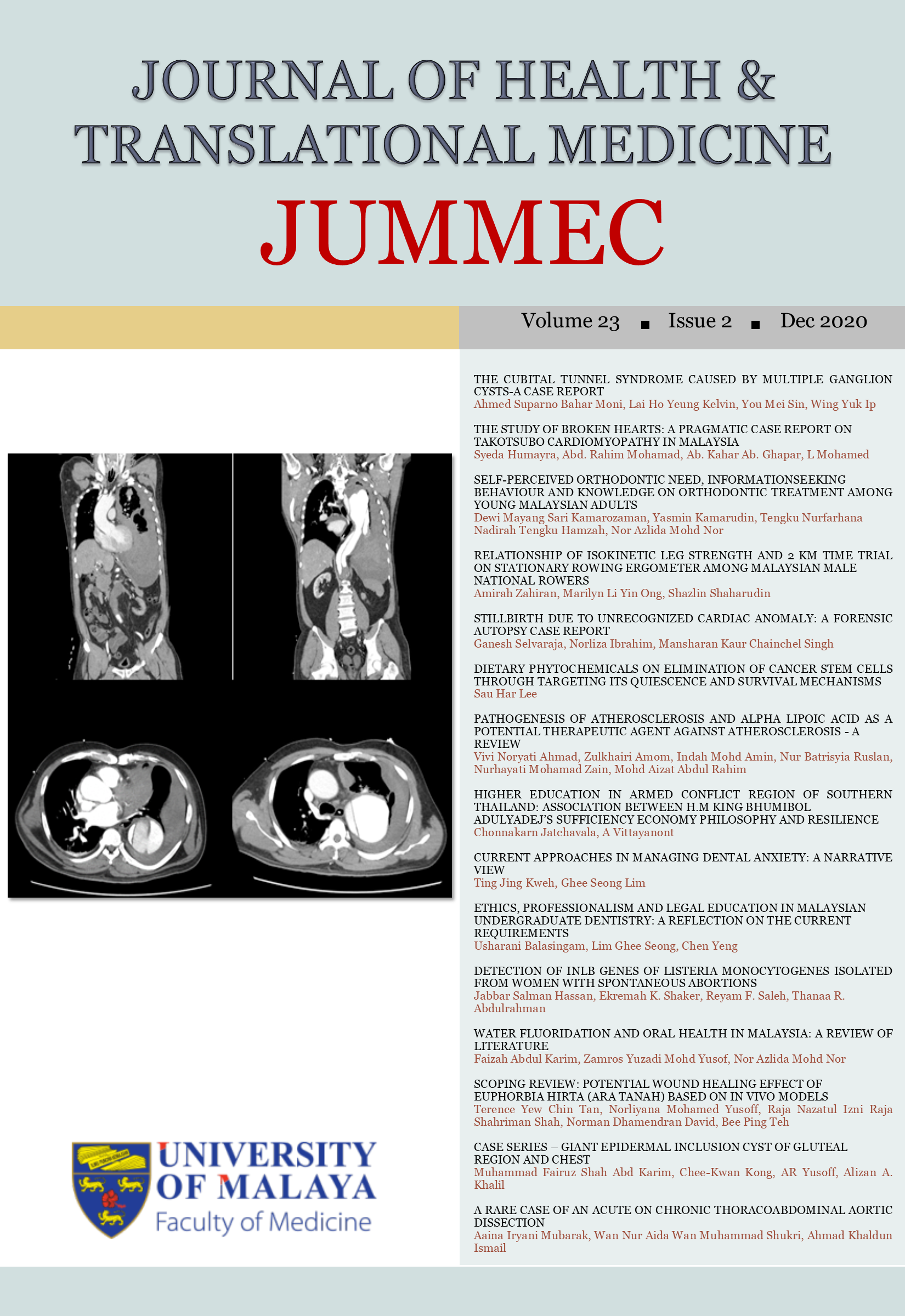THE STUDY OF BROKEN HEARTS: A PRAGMATIC CASE REPORT ON TAKOTSUBO CARDIOMYOPATHY IN MALAYSIA
Received 2018-12-11; Accepted 2020-01-31; Published 2020-08-12
DOI:
https://doi.org/10.22452/jummec.vol23no2.2Keywords:
Takotsubo Cardiomyopathy, Broken Heart Syndrome, Stress-Induced Cardiomyopathy, Apical Ballooning SyndromeAbstract
The Takotsubo syndrome is an acquired, non-ischemic stress-induced cardiomyopathy popularly known as the ‘broken heart syndrome’. It is an acute left ventricular dysfunction presenting mostly in older women after an intensely stressful event. The exact pathophysiology remains elusive. The term came into existence in the early 1990s in Japan, where the distinctive change in the shape of the left ventricle with apical ballooning during systole, resembled the Takotsubo, an octopus pot used bythe Japanese fisherman. From a rare underrecognized syndrome, it has been increasingly recognised as a form of acute cardiac failure. Clinical diagnosis of the syndrome may be unidentified due to its similarity with the acute coronary syndrome, but without the narrowing of coronary vessels in angiographic imaging. There is a substantial elevation of the cardiac biomarkers, troponin and the natriuretic peptides which helps in differentiating the Takotsubo syndrome from myocardial infarction. A case report of a 59-year old Malaysian lady with typical, recurrent episodes of the Takotsubo syndrome is presented.
Downloads
Downloads
Published
Issue
Section
License
All authors agree that the article, if editorially accepted for publication, shall be licensed under the Creative Commons Attribution License 4.0 to allow others to freely access, copy and use research provided the author is correctly attributed, unless otherwise stated. All articles are available online without charge or other barriers to access. However, anyone wishing to reproduce large quantities of an article (250+) should inform the publisher. Any opinion expressed in the articles are those of the authors and do not reflect that of the University of Malaya, 50603 Kuala Lumpur, Malaysia.


